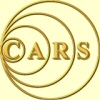 |
G0MWT, GX0MWT, GB5HF, GB100MWT, G100RSGB & GB5RVA
CARS Meetings July - September 2019 |

|
 |
G0MWT, GX0MWT, GB5HF, GB100MWT, G100RSGB & GB5RVA
CARS Meetings July - September 2019 |

|
©Copyright CARS 2019
July Meeting
Tue 2-Jul-2019, 7.30-10pm
Oaklands Museum, Moulsham Street"Three Short Talks"
By CARS MembersThe July meeting featured the CARS 'Three Short Talks' format for a real variety:-
OFDM and All That – Phil Pearson G0UIB Wire Aerial Construction – Tony Gilbey G4YTG Using Trees as Antennas – Peter Bridgeman G3SUY OFDM – Phil Pearson G0UIB
The evening started with one of the most well animated slide sets ever presented at CARS as Phil explained all about OFDM.
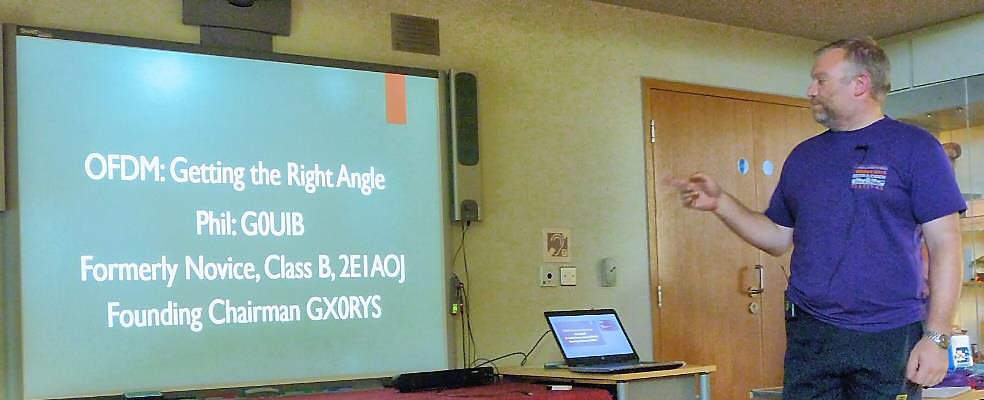
This started with how a series of sine wave harmonics can add up to create a square wave, as well as how their phase relationship can be ‘orthogonal’ (out of phase). Multi-carrier frequncy multiplexes are the basis of a raft of datamodes from FreeDV to ADSL, 4G-LTE/5G, DAB/DVB and more recent Wi-Fi standards.
The basic scheme in most OFDM uses relative slow symbol rates (sometimes just QPSK) on lots of separate but close-spaced carriers (with plenty of error correction spread across them as well), making them relatively to synchronise and resilent to multipath and transient interference.
Creating or receiving these in a radio uses a techncique that goes back to Joseph Fourier (of Transform fame) in the 19th Century, but its only the advent of modern DSP that make it so practical. Spectrally it looks like this:-
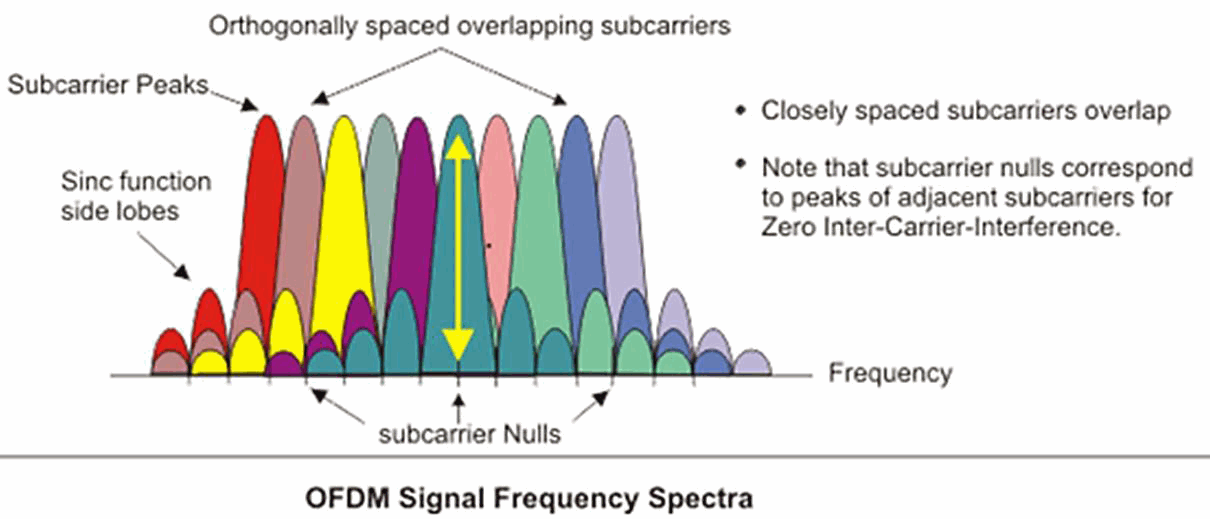
In practice the ideal waveform can be affected by non-linear PAs, poor frequency sources (with phase noise), Doppler as well as differential fading etc. In the worst case, the decoding process may get data from the wrong carrier as illustrated below.
OFDM Signal reception can be impeded by frequency offsets and phase noise
Wire Antennas – Tony Gilbey G4YTG
Next was a wire antenna tour with Tony G4YTG, CARS (and former BT) antenna expert. No Powerpoint for this one – out came pen and paper!Tony illustrated volts and current on some common antennas including the Doublet, W3DZZ 5-band trap dipole, and the famous G5RV.
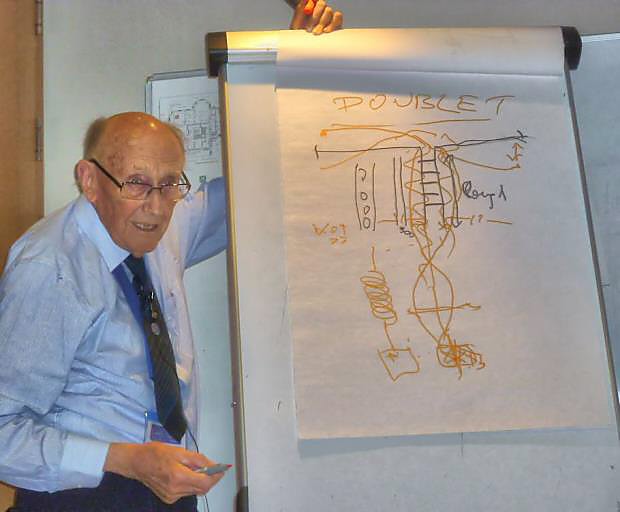
Tony G4YTG with freehand drawings of how various antennas workOur thanks to Tony – and for the handy paper and coloured markers!
100 Years of Antennas – Elaine Richards G4LFM, RSGB
Finally after the break it was ‘100 Years of Amateur Aerials’ by Elaine Richards, G4LFM, RSGB RadCom Editor & Archivist which is one a set of talks originally created for the RSGB centenary.
Bob G4MDB kindly offered to read the presentation notes for a fascinating series of slides from the start in Marconi days when wavelengths were rather longer and ‘fat dipoles’ and groundplanes were even more important than today.
France 1922: Fat caged dipoles for 3MHz (100m) used by Deloy
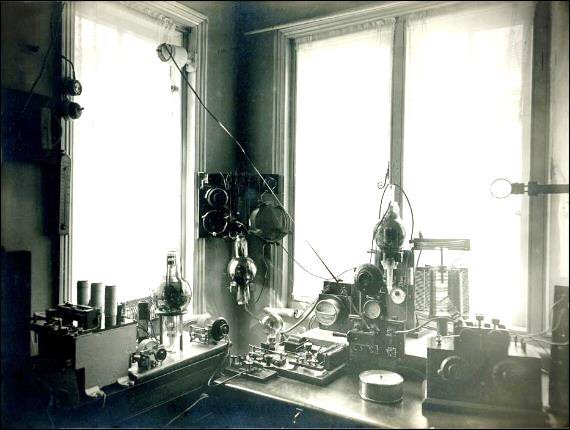
The shack and antenna system for Ernest Simmons 2OD, Acton 1912, for 1000m / 300kHzAs the slides moved on to more recent years the G5RV, VHF and PW 10 GHz antennas all featured.
All in all a most intriguing trio of talks – our thanks to all the presenters!
Note: Offer of talks for other short slots are always welcome - please let Colin G0TRM know
August Meeting
Tue 6-Aug-2019, 7.30-10pm
Danbury Village Hall"Constructors Competition"
By CARS MembersThe August meeting was the annual CARS constructors competition. Whilst a regular event, the venue was a little unusual in that the large hall at Danbury was used, as Oaklands was not available. Three fine entries were presented:-
- Andy Tyler G1GKN opened the evening with a 10GHz receiver for the QO-100 geostationary satellite
- Kevin 2E0FEQ gave an inspiring tale of perseverance and self-training as he first tried to build a Chinese circuit design, only to find issues and then build his own test circuits as well to diagnose it.
- Finally Alan M0IWZ presented how he had adapted an Arduino to be an antenna and network analyser.

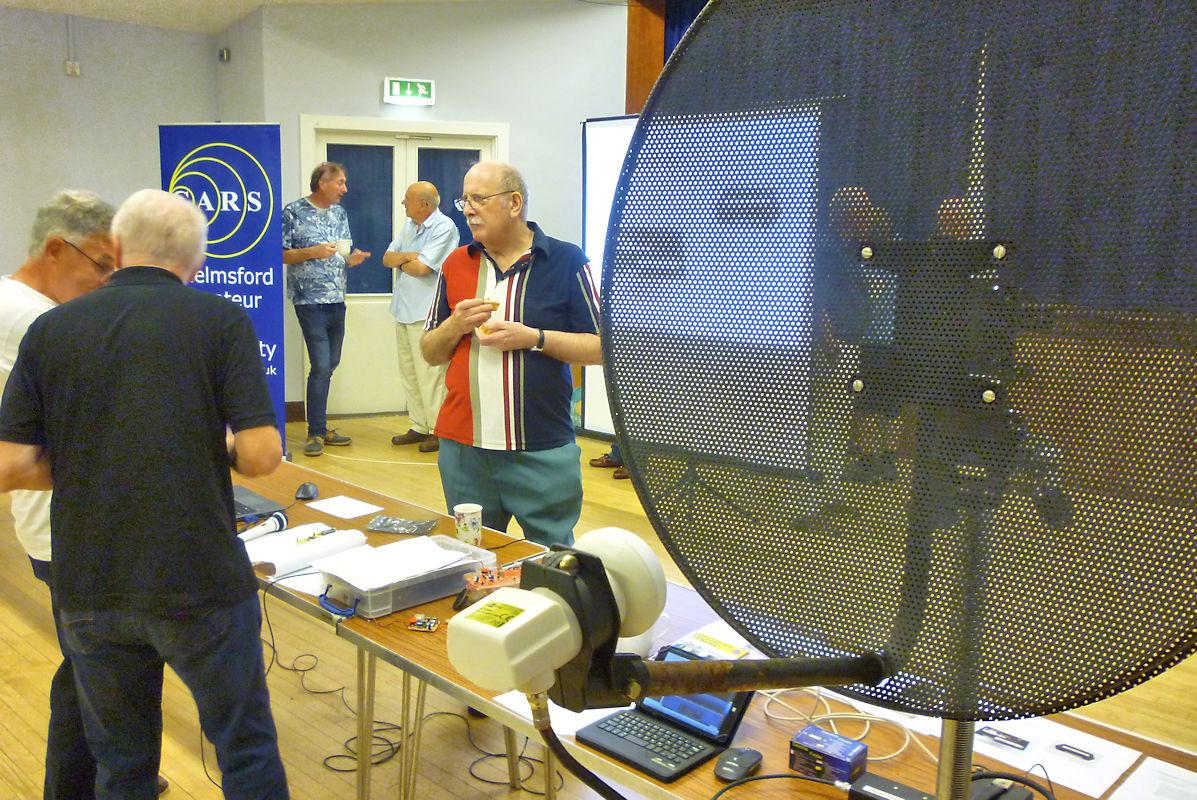
John G8DET commenting on the Satellite dish entry - and others looking at the entrants at breaktime
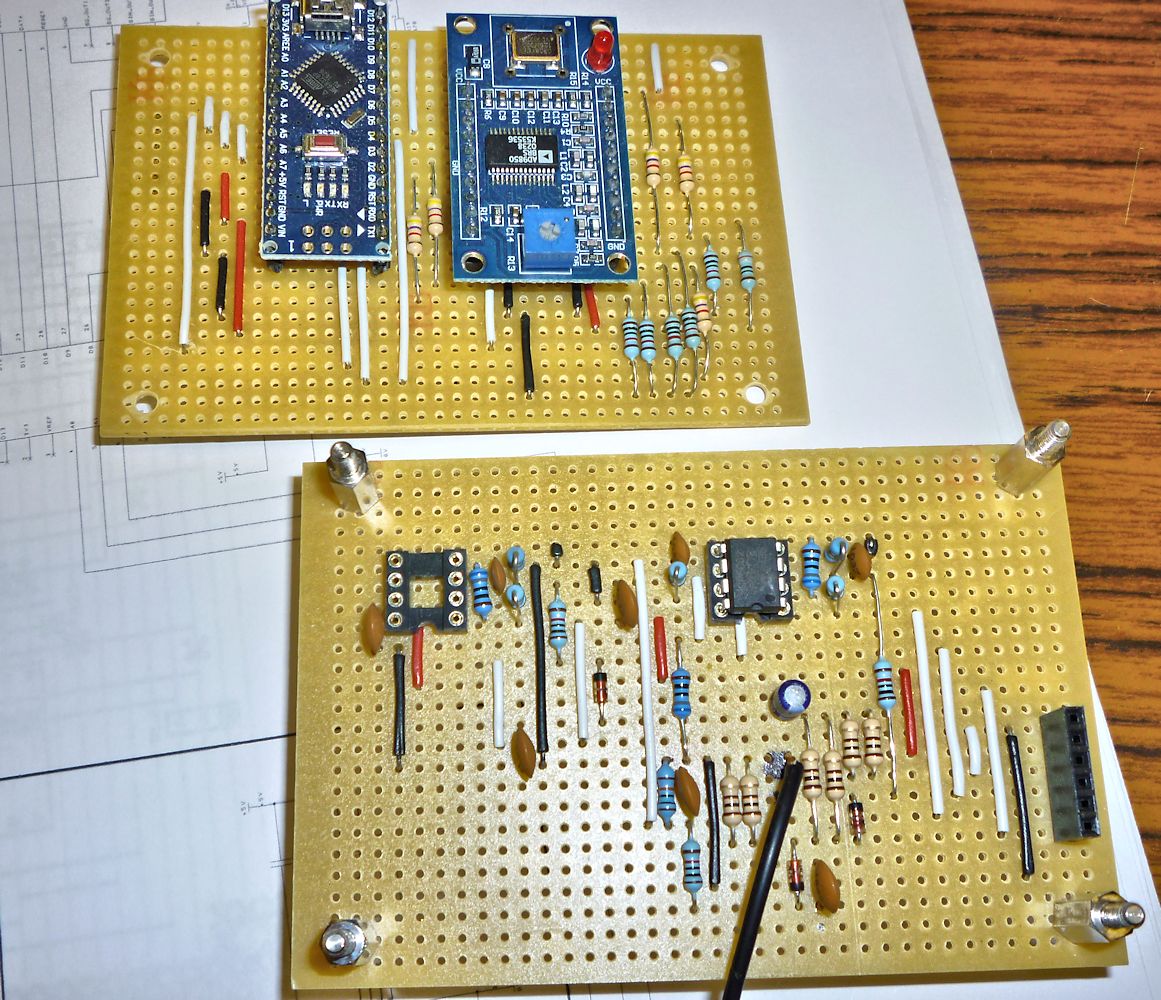
Alan's analyser and Kevin's circuitsCARS President Tony Gilbey G4YTG handled most of the honours and counting up all the votes during the break in what was a close run result.
Cash Prizes were awarded - £15 for 1st, £10 for 2nd and £5 for 3rd


Prizes were presented by President Tony G4YTG: 2nd - Kevin 2E0FEQ; 3rd - Alan M0IWZ
And First prize - Andy G1GKN
September Meeting
Tue 3-Sep-2019, 7.30-10pm
Oaklands Museum, Moulsham Street"Life as a Radio Officer"
By Dave Ellis G4AJY
Local CW enthusiast Dave Ellis G4AJY served in the Merchant Navy as a Radio Officer for eight years in his younger days. His is frequently asked what he had to do to become an R/O, what the R/Os job was like, and what life was like after leaving the sea.
In a talk entitled "My Time as a Radio Officer" Dave covered these questions and much more with some great tales covering his Training for the Job; Duties at Sea; Trips and Travel and Life after the Sea.
Qualifications started with a minimum entry level of 20wpm Morse which after two year of experience and 25wpm could get you to a higher grade first class position as Chief Radio Officer. However lots of other skills were needed inc maths, physics, electronics, propagation et – much like a Full exam today with with far more regulations and a 25wpm typing test as well. Dave summary was 5 written exams of 3 hours each (5Qs for 8) and 75% pass mark, perfect Morse and a fault finding test.

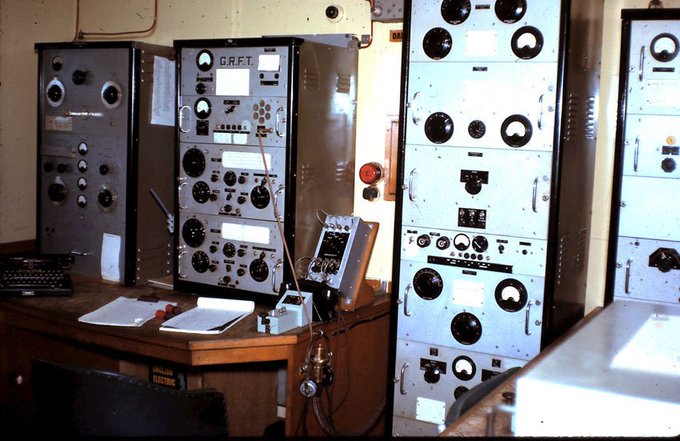
Dave Ellis and info on the Ship Radio, Roster and Radio Room ClockOnce in service, there was a watch-keeping roster which was a combination of shift patterns and the need to monitor distress frequencies at regular times inc CW on 500kHz at 15 and 45 mins past the hour; and 2182kHz AM at 00 and 30 mins – as marked on a radio room clock.
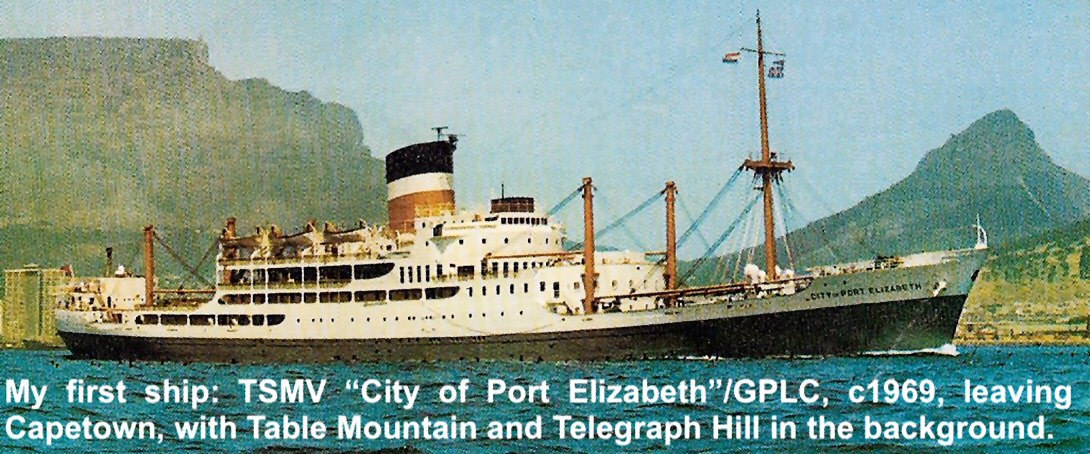
Some of Dave’s ships – the City of Port Elizabeth and the New Zealand StarAfter life at sea Dave had a varied career – inc ITT and Marconi Basildon, Ford R+D at Dunton. Dave commented on how the 100-year reign of R/Os ended in 1998 when the maritime safety laws were changed to allow ships to automate their communications and safety using satellites and computers. Indeed 500 kHz fell so silent, amateurs were nearly given it in 2012 (when we got 472-479 kHz). Following the break and raffle, Dave was presented with his speaker's mug by CARS Chair Elliott.
Dave Ellis receiving his speakers mug
To RETURN to the Meetings Page - Click Here
To RETURN to the CARS Home Web Page - Click Here